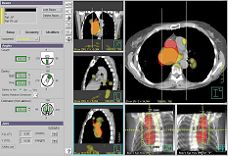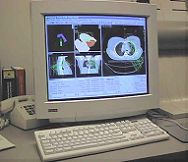


Machine Quality Assurance
The integrity and performance of most treatment machines were monitored and maintained by the
physics workshop. The medical physicists performed the routine dose rate calibration of the linear
accelerators and other treatment machines on a weekly basis. They also check on the machines’
performance parameters such as radiation field flatness, symmetry and beam energy on a regular basis.
This is to make sure that the machines are in good order and the treatment plans are delivered as planed.
The technicians and mechanics help on the repair and scheduled preventive maintenance of all variety of
equipment encountered in a busy oncology department. They offer a fast-response service so that
interruption to patient service is kept to a minimum.
Treatment Routine
The treatment room is deliberately kept cool to make sure that the equipment operates properly. You
will be ask to lie on the treatment couch and the light will be dimmed so that the radiographers could
align you with the machine using laser light mounted on the ceiling and walls. If you have been moulded
a plastic cast, it will be used for fast and accurate alignment. During the radiation treatment you will not
feel anything, but you may hear noises from the machines or notice blinking lights during therapy. You
will be alone in the room during the actual treatment period (usually less than five minutes), but you can
speak to the radiographers, who can see, hear and talk with you using a closed-circuit TV and
microphone in the treatment room.
During each treatment session, the radiographers preset the linear accelerator and check that the correct
amount of radiation is given. The machine will stop automatically after completion of treatment.
Port films are taken every few treatments to continue to verify your treatment.
Monitoring Your Progress
During the course of therapy, your radiation oncologist will see you regularly to follow your progress
and to discuss your treatment. As treatment progresses, the doctor may make changes in the schedule
depending on your response or reaction to the therapy.
Possible Side Effects
Over time, you may develop some side effects, which depend on the part of your body being treated. For
example, you will not lose your hair unless you are undergoing radiation therapy to your head or you
have undergone a combined treatment of chemotherapy. Some patients treated in the head and neck may
have dry throats and reddish skin reaction (avoid using soap and hot water). Patients receiving radiation
in the abdomen or pelvic areas may have some nausea or diarrhea. These will go away in due course but
if the condition is badly affecting you, seek the advice from your radiation oncologist.